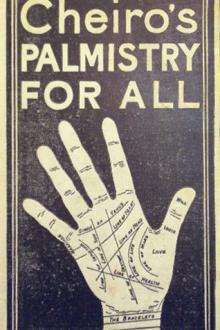The Diary - Samuel Pepys (red white and royal blue hardcover txt) 📗

- Author: Samuel Pepys
Book online «The Diary - Samuel Pepys (red white and royal blue hardcover txt) 📗». Author Samuel Pepys
↩
Nova Scotia and the adjoining countries were called by the French Acadie. Pepys is not the only official personage whose ignorance of Nova Scotia is on record. A story is current of a prime minister (Duke of Newcastle) who was surprised at hearing Cape Breton was an island. “Egad, I’ll go tell the King Cape Breton is an island!” Of the same it is said, that when told Annapolis was in danger, and ought to be defended: “Oh! certainly Annapolis must be defended—where is Annapolis?” —B. ↩
Charles Stuart, third son of the Duke of York, born July 4th, 1666; created Duke of Kendal, October 31st, 1666; and died May 22nd, 1667. ↩
The passage between brackets is written in the margin of the MS. ↩
Alderman Sir John Frederick, elected M.P. for the City of London, March, 1662–63; Lord Mayor of London, 1662, and President of Christ’s Hospital. His eldest son, John, was created a baronet, 1723. ↩
The Mercers’ Company, under whose superintendence St. Paul’s School was placed by Dean Colet, the founder. The school remained in its old locality until 1880, when it was removed to West Kensington, and the schoolhouse pulled down. ↩
Lawrence Moyer, of Low Leyton, in Essex, whose son, of the same name, was afterwards Sir Samuel Moyer, Bart., and High Sheriff of Essex, in 1698. He had also been one of the Council of State. His widow, Rebecca, daughter of Alderman Sir William Joliffe, founded the well-known Lady Moyer’s Lectures. —B. ↩
An error for Bedfordshire. The place was Hawnes, which belonged to the Lukes of Cople, who, about 1654, had sold it to Sir Humphrey Winch, from whom, and not directly from Sir Samuel Luke, Sir George Carteret purchased it in 1667. The son by this marriage was created Lord Carteret of Hawnes in 1681. —B. ↩
Sir Samuel Luke, eldest son of Sir Oliver Luke, of Woodend, Beds. He belonged to the Presbyterian party, and appears to have been a stout soldier. He was referred to by a contemporary as “Great-spirited little Sir Samuel Luke.” He was knighted in 1624, and died in 1670; buried at Cople, in Beds., on the 30th August. His fame has been injured by the supposed fact that he was the hero of Hudibras. ↩
Izaac Walton’s Life of Mr. Richard Hooker, “London, by J. G. for Ric. Marriott,” was first published in 1665. ↩
Lady Vane was Frances, daughter of Sir Christopher Wray, Bart., of Ashby, Lincolnshire. —B. ↩
Burnet says of Sir John Duncomb, that “he was a judicious man, but very haughty, and apt to raise enemies. He was an able Parliament man, but could not go into all the designs of the Court; for he had a sense of religion, and a zeal for the liberty of his country” (Own Time, vol. i, p. 437, ed. 1833). Duncomb’s removal from the Ordnance to the Treasury is not overlooked by Marvell (Works, vol. iii, p. 391):
“Southampton dead, much of the treasure’s care
And place in council fell to Duncomb’s share.
All men admired, he to that pitch could fly,
Powder ne’er blew man up so soon, so high;
But, sure his late good husbandry in petre [saltpetre],
Showed him to manage the Exchequer meeter
And who the forts would not vouchsafe a corn,
To lavish the King’s money more with scorn,
Who hath no chimneys to give all is best;
And ablest speaker who of law hath least.
Who less estate for Treasurer most fit.
And for a Chancellor he that has least wit.
But the true cause was, that in’s brother May,
Th’ exchequer might the privy-purse obey.”
—B. ↩
Commissioner Pett, in his communication to the Navy Commissioners (May 24th), states that “Murford and Moorcock went two-thirds in Newhall timber” (Calendar of State Papers, 1667, p. 117). ↩
See January 23rd, 1666–67. ↩
During a very high flood in the meadows between Huntingdon and Godmanchester, something was seen floating, which the Godmanchester people thought was a black pig, and the Huntingdon folk declared it was a sturgeon; when rescued from the waters, it proved to be a young donkey. This mistake led to the one party being styled “Godmanchester black pigs,” and the other “Huntingdon sturgeons,” terms not altogether forgotten at this day. Pepys’s colt must be taken to be the colt of an ass. —B. ↩
Mary, widow of Morgan Davis, Esq., the third wife of Alderman Robert Lowther, was the lady here referred to. —B. ↩
According to Collins, Anthony Lowther had but one brother, John, a merchant at Danzig, and one of the Commissioners of Revenue in Ireland. See Collins, vol. v, p. 702. Anthony Lowther, who married Margaret Penn, was the son of Elizabeth, daughter of William Holcroft, Esq., second wife of Robert Lowther, of Marske, co. York, and Alderman of London, who died 1655. —B. ↩
See March 2nd, 1666–67. ↩
St. Margaret’s. ↩
“15th February, 1666–67. My little book in answer to Sir George Mackenzie was now published, entitled, Public Employment and an Active Life, with Its Appenages, Preferred to Solitude.”
Evelyn’s DiarySoon afterwards Evelyn wrote to Cowley, the poet, and excused himself for writing in this strain, and in truth his opinions were divided on this question. ↩
At Bankside.





Comments (0)